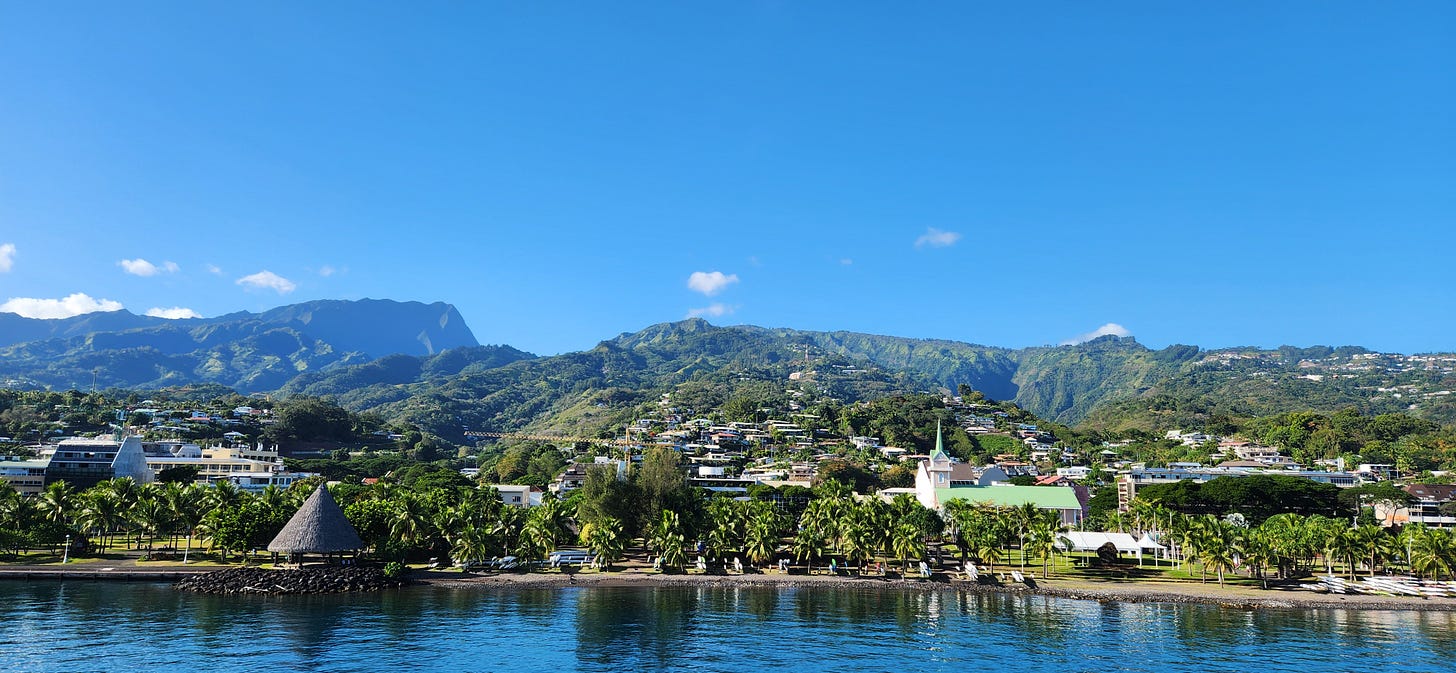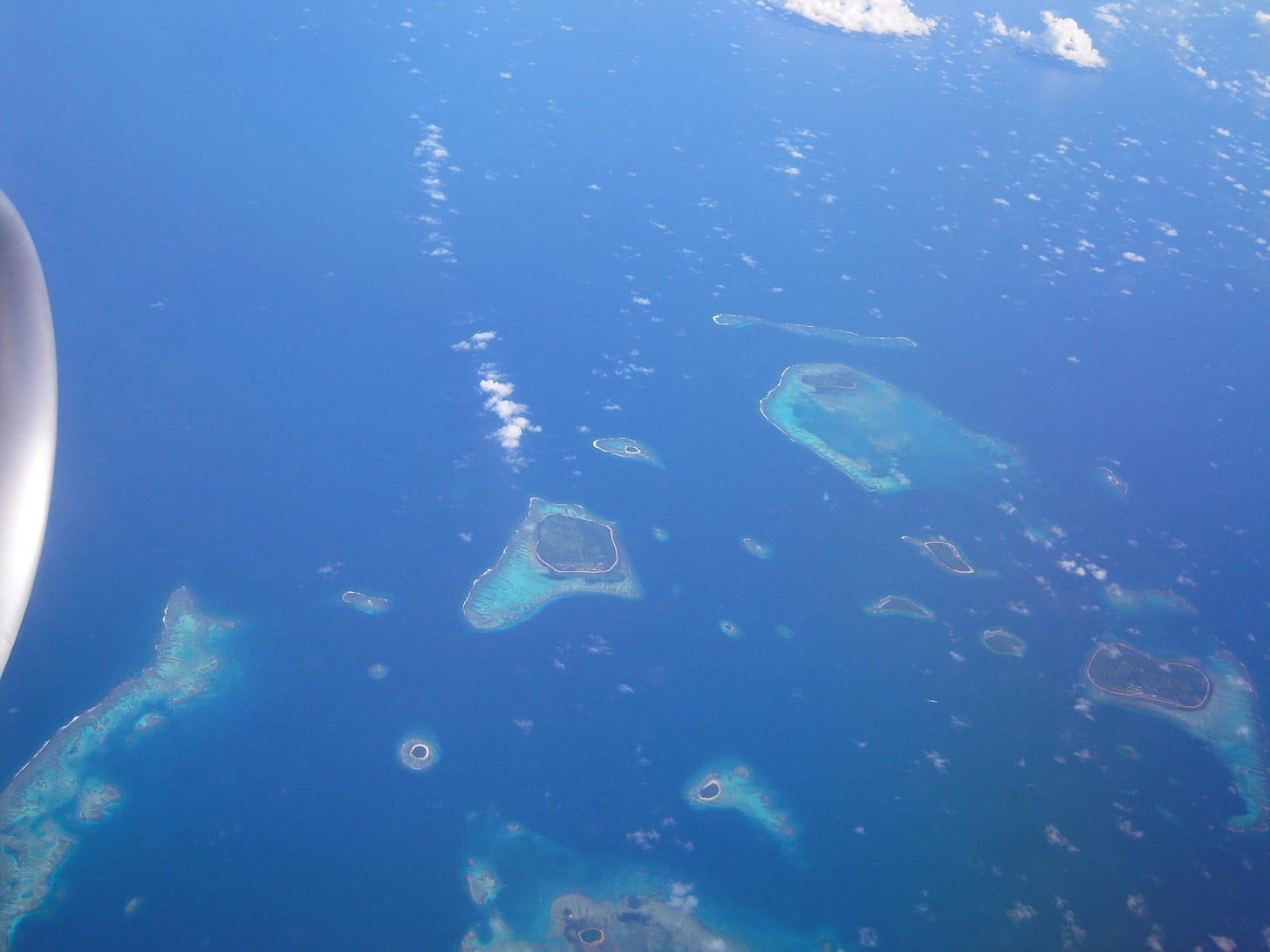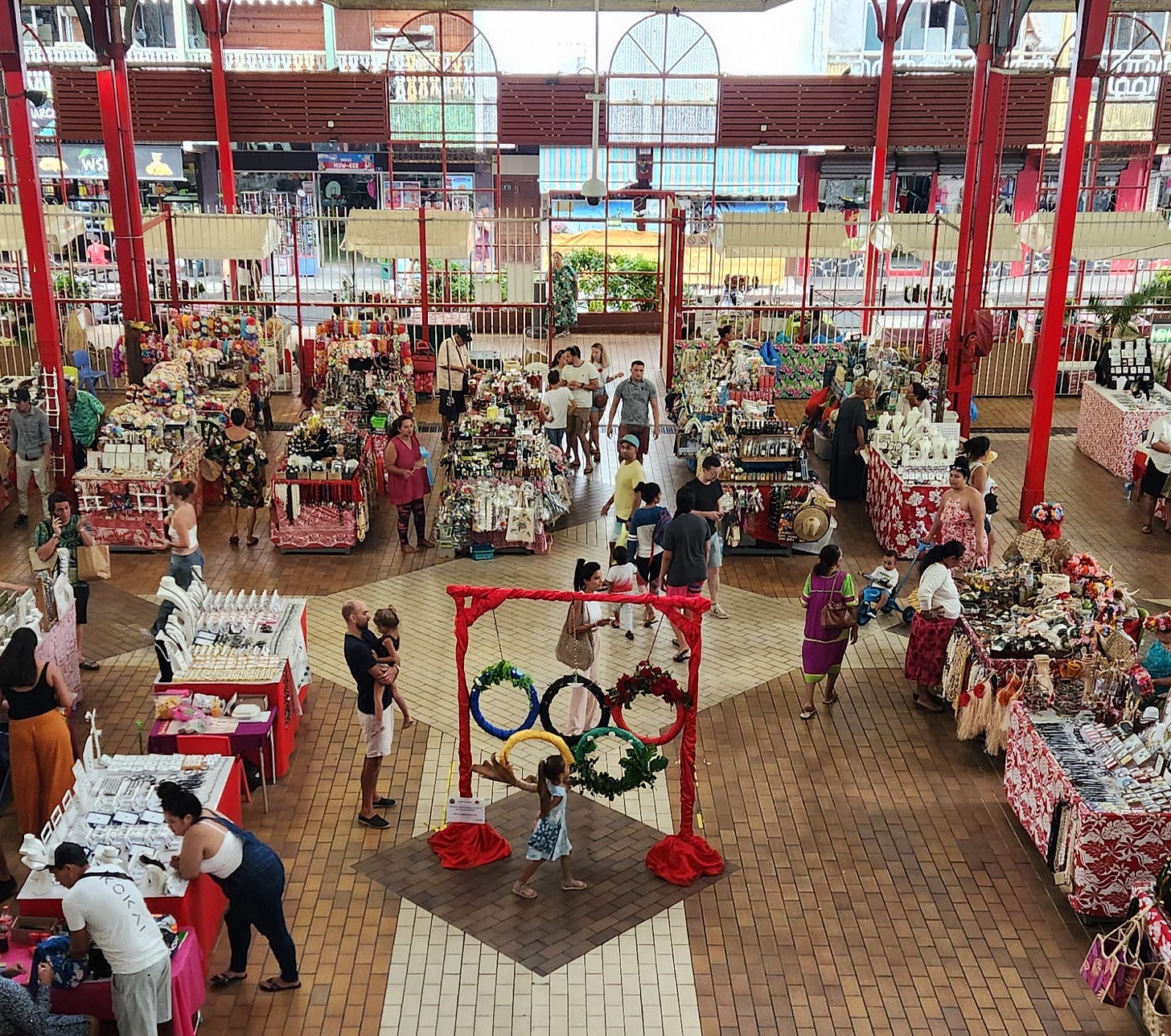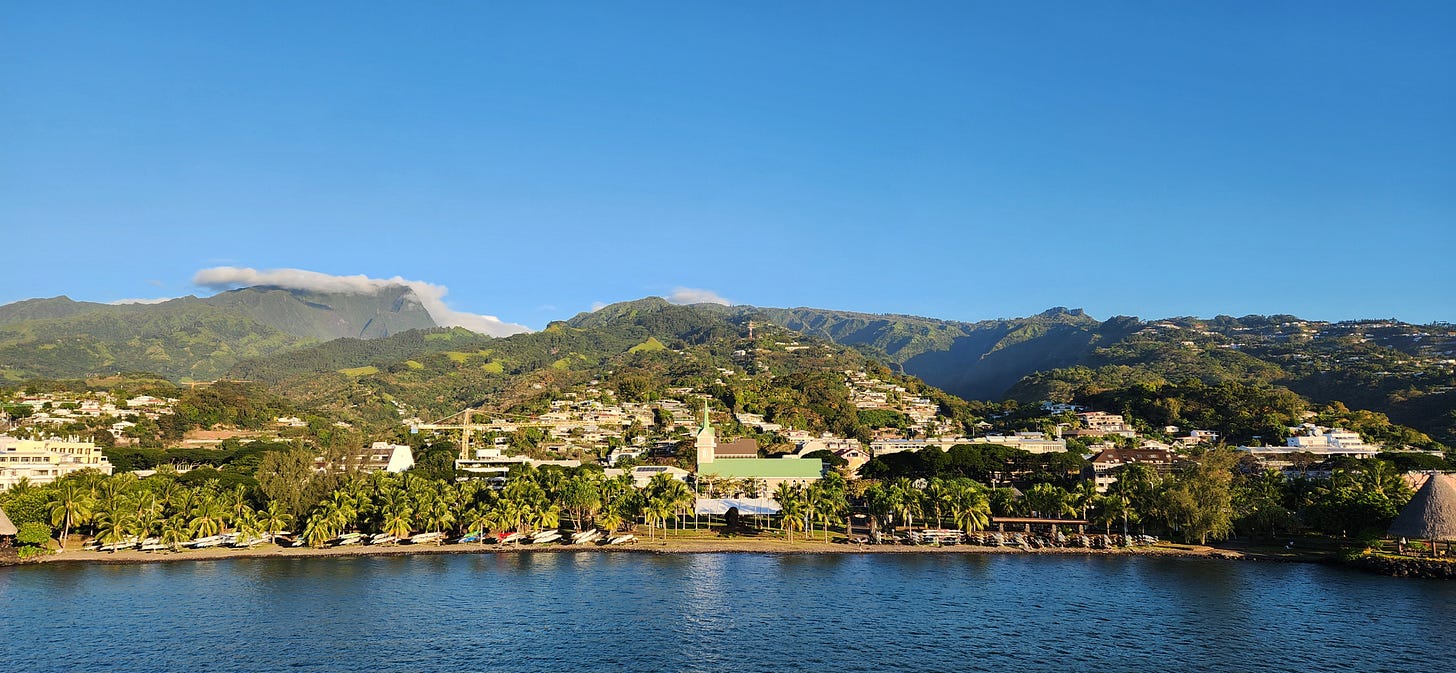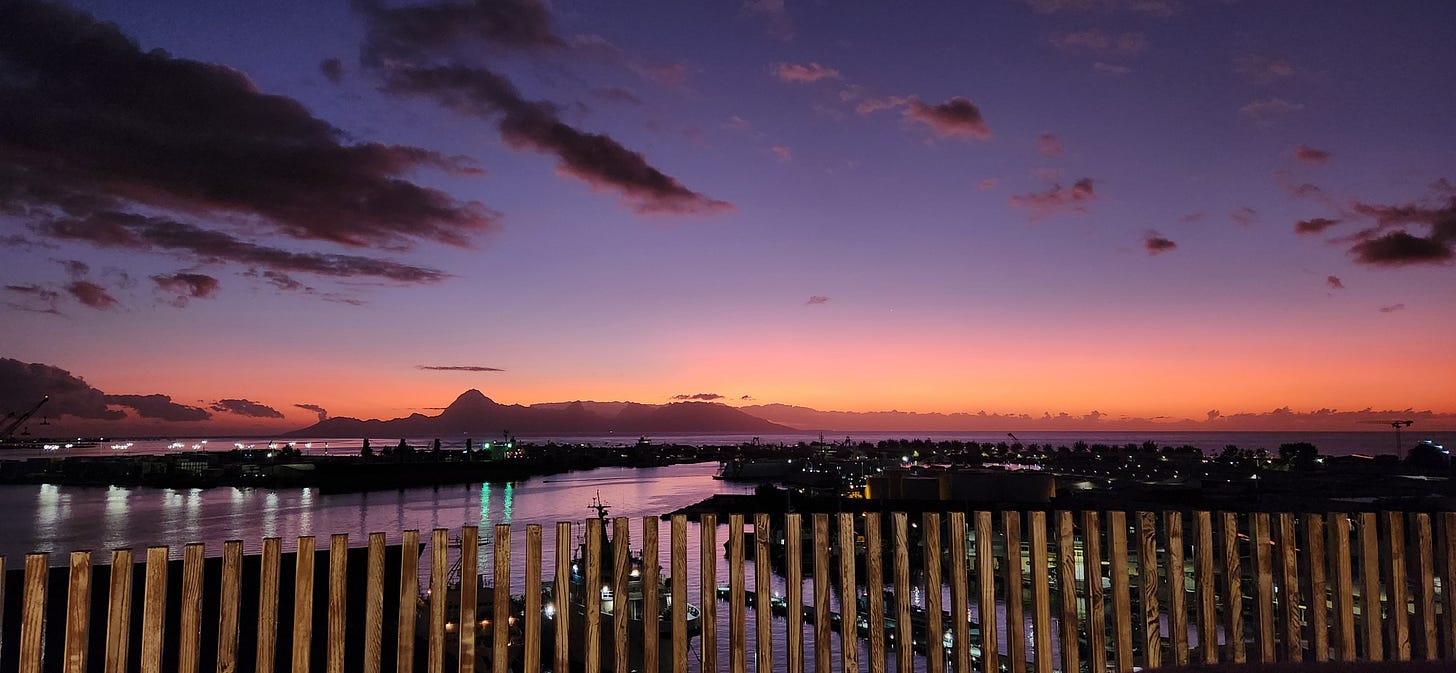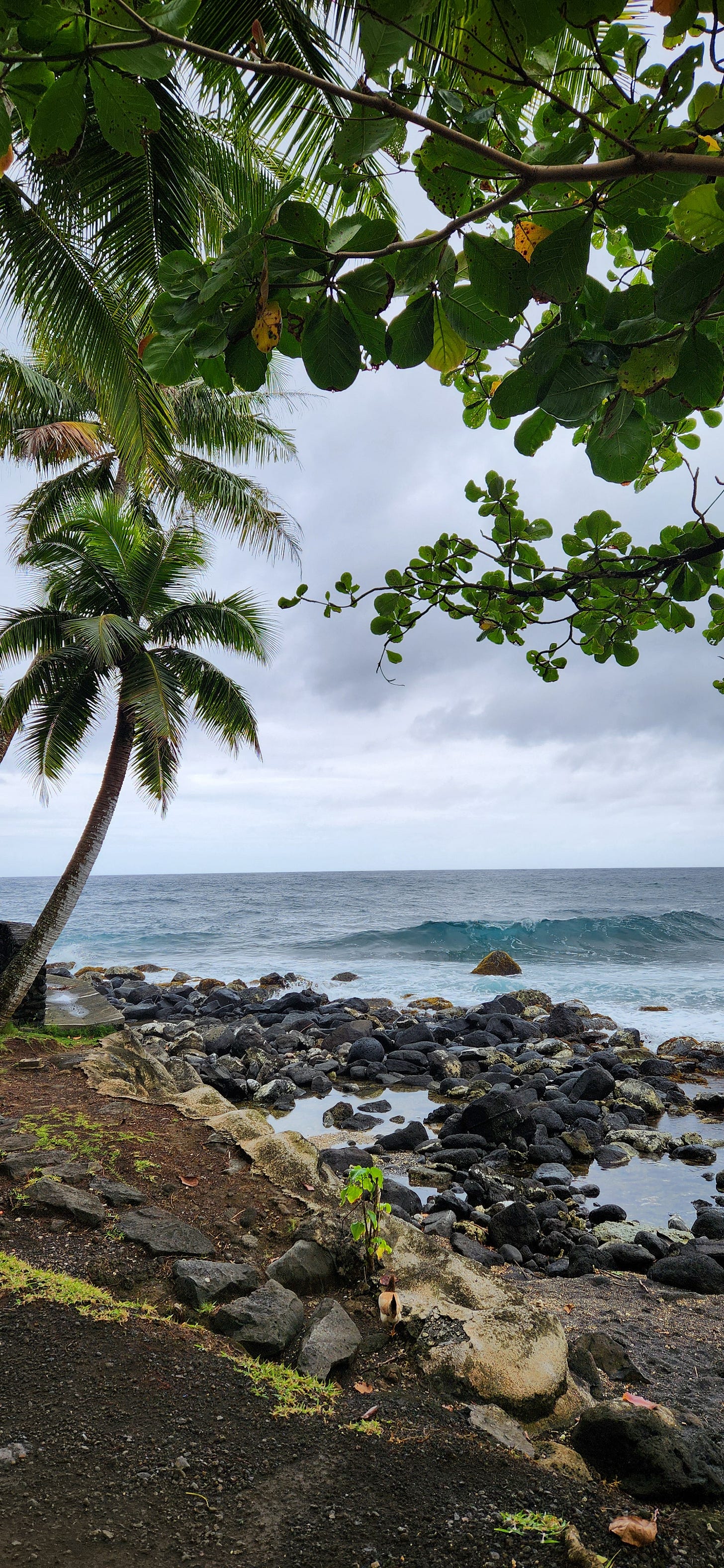Ia ora na!
Last month, I went to visit French Polynesia for the first time. It is relatively close to New Zealand, just under 5 hours flight to get to the middle of the pacific ocean!
If you are lucky enough to fly during day time over the ocean, you could spot some islands and small atolls.
However, whatever the time of the day you land at Faa'a airport in Tahiti, you will be greeted by the sounds of the ukulele and the smell of the Tiaré flowers. And even if August is the middle of winter there, it feels like summer. Under the tropics, winter means dry season, but don’t be fooled! The heat and humidity will remind you that you’ve just landed on a tropical island.
At the airport, people are wearing either flower or shell necklaces. You can buy the Tiaré necklaces just outside of the terminal. I’ve later learnt the that shell necklaces are for goodbyes.
The airport is short ride away from Pape’ete the capital of French Polynesia. Most of people don't actually visit Tahiti and fly straightaway to another island, such as Bora Bora.
Tahiti is a less popular destination due to the lack of white sand beaches and infamous for its busy traffic, yet I think it’s truly the best place to feel the French and Polynesian mix heritage. One minute you can be buying a baguette and croissant in a boulangerie, going to the same supermarket you would find in any French city, watch the sunset from a roof top like you are on the Côte d'Azur and hear everyone speaking French. The next, you are watching the surf breaking on the distance reef, gazing at Moorea eroded volcano, buying freshly white tuna and eating coconut at the market. The Polynesian and French cultures are embedded in the day to day life of Pape’ete.
By the way, even though French is the official language, the locals will greet you with some Polynesian words:
Ia ora na Bonjour Hello
Māuruuru (ma-rooh-rooh) Merci Thank you
Nānā Au revoir Goodbye
Don’t despair if neither Polynesian nor French is your forte, French Polynesia remains a touristy destination and everyone, at least in hospitality, speaks English. Some use of French is appreciated and if you use the Polynesian greetings, you reach local level!
I would recommend spending a couple of days in Tahiti and maybe an extra at the end of the trip before catching your flight back home.
First Stop: Le Marché municipal, Pape’ete Market, is open every day and it’s great spot if you want to get some food, come preferably in the morning to load on fresh products. It’s also a great place to buy a paréo which is a wraparound skirt to usually wear at the beach. Same for monoi, which is Tiaré blossom soaked in coconut oil. Tahitians use it for their skin and hair. And if you are into baking, remember to stock up on some Tahitian Vanilla pod. Of course, the famous Black Pearl can also be found there too!
Then, go for a wonder around the outside of the market and along the waterfront.
In the evening, everyone gathers on the terraces to take l’apéritif and watch the sunset. I have to admit, the sunset is pretty spectacular, especially in Moorea (but that’s a story for another day). There is a couple of great spot to take l’apéro with great views over the ocean. On the best spot is the Reeftop, located at the 8th floor of the Kon Tiki hotel, looking over Papeete harbour. La Plage is another great spot by the ocean, to watch the surf break and facing Moorea. The Intercontinental hotel has also an amazing spot over the ocean, asked a spot on the Motu, meaning the island, which is a platform over the ocean. Booking at these spots is essential!
The next day, I would recommend to rent a car and go explore the island.
While driving around the island, the roads are in good shape and there is no motorway besides a small portion around the city. Drive with care as there are a lot of stray dogs, roosters and chickens, but also people walking or cycling on the road.
You can drive the whole island in a couple of hours without breaks but count at least a full day to explore it.
Tahiti has this distinct shape of the 2 islands, a main one and a peninsula attached to it.
The main landmass is called “Tahiti Nui”, big Tahiti, and the peninsula “Tahiti Iti”, yes, you’ve guessed it, little Tahiti.
Along the road, there are multiple spot to watch waterfalls, blowholes, and observe some marine life. Whales from the beginning of August are migrating through the island with their calves. Dolphins, sharks and rays are easy to spot all year around. For a snack, you can stop at some roulottes, food trucks around the island sitting by various beaches.
The main spot on Tahiti Iti peninsula is Teahupoʻo. This village is famous for its legendary wave. It can be huge and breaks on the shallow reef. Not a place for amateur surfers and actually all year around you can run into professionals of the sport. Sadly, I’ve visited the Tahiti during the olympics games and the road to Tahiti Iti was closed. Teahupo’o is a spot that I’ve dreamed to visit for years and now it’s my excuse to come back to this part of the world to finally see it!
Don’t forget your rain coat, it rains very often and all year around. Who said dry season?
Before leaving Tahiti, fill up on essential before heading to your next island in one of the big supermarket. If you have forgotten your mosquito repellent or sun screen, it’s a great time to get them. And keep in mind that everything is closed on Sundays.
This was part 1 of my French Polynesia guide. I hope you've enjoyed it. In my next post, I'll take you to our next stop Moorea. Spoiler alert Moorea was THE highlight of this trip for me.
Is Tahiti on your travel list ? Or have you already been there ? Let me know in the comments!
A bientôt!




